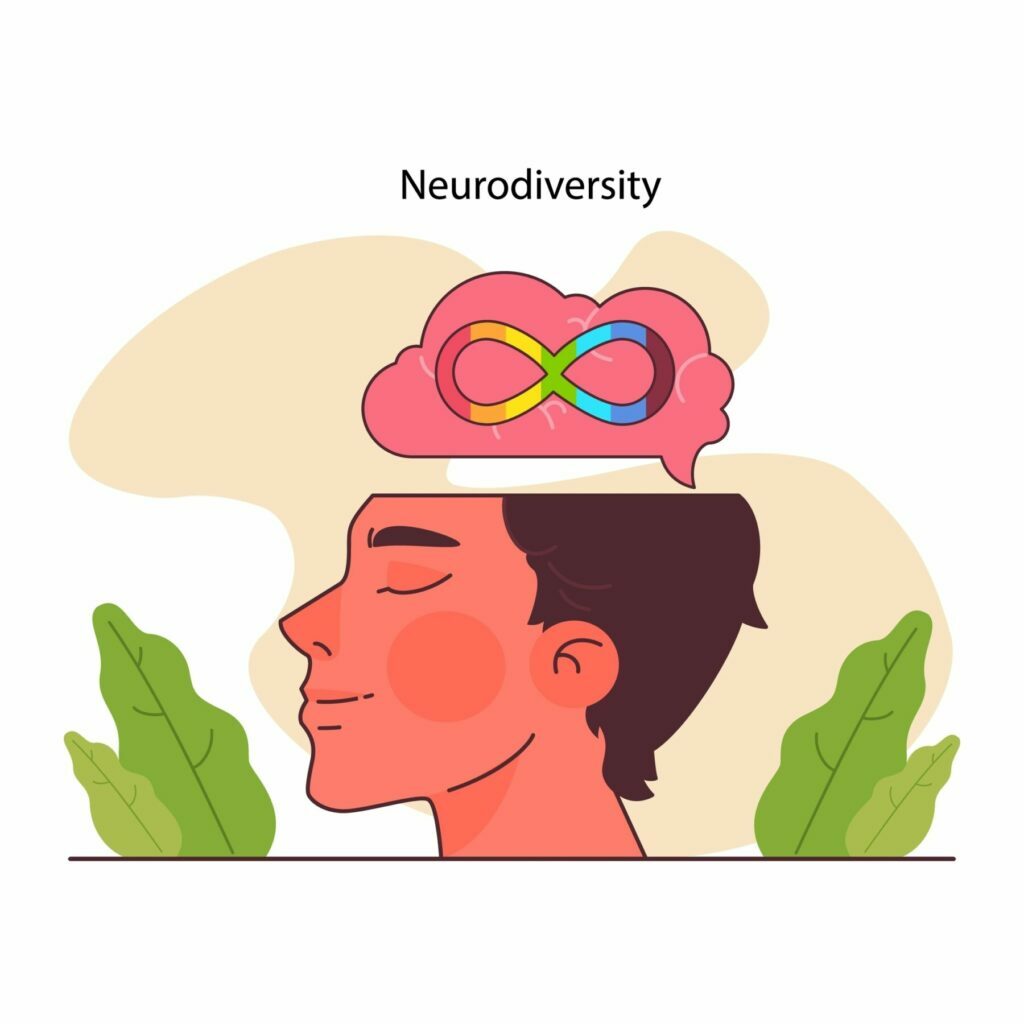Which Type of Trauma Therapy Is Right for You?

The National Council for Behavioral Health reports that nearly 70% of Americans have experienced a traumatic event of some form in their life causing profound mental health impacts. However, not everyone gets the timely help they need.
Trauma therapy has the potential to greatly improve and even save lives, but most people fail to recognize the signs of their deteriorating mental health. Therefore, before we shed light on the importance of therapy for trauma, let’s talk a bit about what exactly trauma entails.
Trauma is an emotional response that is so strong that the brain and the rest of the nervous system don’t process it normally or successfully. It can stem from a variety of sources, including but not limited to:
- Experiences as a person with marginalized identities (i.e., being queer/LGBT, Asian American, or Black)
- Childhood trauma (i.e., abuse, neglect, or witnessing violence during childhood)
- Relational trauma (i.e., gaslighting, covert narcissism, domestic violence, etc.)
- Accidents or natural disasters (i.e., car accidents, birth complications, tornados, or other life-threatening situations)
- Witnessing stranger violence or crime
- Loss or grief (i.e., miscarriages, death of a loved one, divorce/break-ups, or other significant losses)
Keep in mind that the impact of trauma can manifest in a variety of ways, including flashbacks, nightmares, anxiety, depression, mood swings, and difficulty forming and maintaining relationships.
It’s crucial that the signs of trauma are recognized timely so that appropriate therapy can be sought. Trauma therapists can be highly beneficial in enabling individuals to address and process their experiences healthily.
The Role Of Trauma Therapy And Its Importance
Trauma therapy is a specialized form of therapy designed to help individuals heal from past traumatic experiences. Therapy for trauma is for everyone, whether it’s people who have experienced a single traumatic event or someone with multiple traumas over time.
In fact, complex trauma (such as neglect or relationship trauma) is often less easily identified, but even more impactful on mental health. The goal of trauma therapists is to provide individuals with a safe and supportive environment for processing and healing.
Remember, trauma can manifest in various ways, such as anxiety, depression, relationship problems, acute stress, panic attacks, PTSD, and other mental health conditions. By seeking trauma therapy, individuals can work through their trauma, develop coping strategies, and ultimately experience healing and recovery.
The most critical aspect of trauma therapy is that it provides individuals the opportunity to explore and process their traumatic experiences in a safe, supportive, and non-judgmental setting.
Trauma therapists are trained to help individuals navigate their feelings, thoughts, and behaviors related to the trauma, without engaging in “reliving” experiences. This reprocessing allows for a deeper understanding and resolution of past events.
Trauma therapy can also help individuals build resilience, improve self-esteem, and develop healthier coping mechanisms for dealing with stress and triggers associated with their experiences.
Through guided therapy sessions, individuals can learn to reframe their experiences, cultivate self-compassion, and foster a sense of empowerment in their healing journey.
What You Should Know About Different Types Of Therapy For Trauma
Trauma is a pretty broad term that encompasses a wide range of experiences. Naturally, no two people have the same experience or even response to traumatic events. Different therapy techniques work for different individuals, and it’s vital to figure out what you need.
Here are some techniques commonly used in trauma therapy.
- Prolonged Exposure Therapy – PET is a well-established type of trauma therapy that is designed to help individuals confront and process traumatic memories and related emotions. The goal of Prolonged Exposure Therapy is to reduce symptoms of trauma, such as anxiety, fear, and avoidance, by gradually exposing individuals to their traumatic memories in a safe and supportive environment.
This type of therapy’s mechanism for change is to help individuals break free from the cycle of avoidance and fear that often accompanies trauma. By confronting their traumatic memories in a controlled setting, individuals can learn to reprocess and integrate these memories in a way that reduces their emotional intensity and power.
Research has shown that Prolonged Exposure Therapy can lead to significant improvements in symptoms of post-traumatic stress disorder (PTSD), depression, and anxiety. Many individuals who have undergone Prolonged Exposure Therapy report a reduction in intrusive thoughts, nightmares, and other symptoms.
- Internal Family Systems (IFS) Therapy – IFS is an innovative and evidence-based approach to treating trauma that recognizes the complexity of the human psyche as composed of various parts or subpersonalities. By identifying and understanding these parts, individuals learn to heal their internal system, particularly focusing on the parts that carry the wounds of traumatic experiences.
IFS therapy facilitates a compassionate self-led healing process, allowing the individual to access their core Self, characterized by qualities such as calmness, curiosity, and clarity, to lead the healing journey. This approach not only helps in addressing the symptoms of trauma but also fosters a sense of wholeness and balance within the individual, promoting profound and lasting healing.
- Psychodynamic Therapy – This type of trauma therapy dives deep into the unconscious mind to unravel the roots of trauma and its lasting impacts. This therapeutic approach recognizes that our past experiences, relationships, and emotions shape our present behaviors and patterns.
By exploring these underlying dynamics, psychodynamic therapy helps individuals gain insight, self-awareness, and a deeper understanding of their trauma. It’s focused on exploring and processing the unconscious conflicts and unresolved issues that contribute to trauma symptoms.
Through this process, individuals can uncover hidden traumas, unresolved emotions, and maladaptive coping mechanisms that may be perpetuating their distress. Psychodynamic therapy provides a safe space for individuals to express their thoughts and feelings, confront painful memories, and work through complex emotions associated with trauma.
- Cognitive Processing Therapy (CPT) – Is one of the most recognized forms of therapy for trauma. One of the critical components of CPT is cognitive restructuring, which involves identifying and challenging negative thoughts and beliefs related to the trauma. By addressing and reframing these distorted thoughts, individuals can develop a more balanced and adaptive understanding of their experiences.
Through structured sessions and homework assignments, individuals can learn to identify and change unhelpful patterns of thinking that may be contributing to their distress. Research has shown that CPT can be highly effective in helping individuals regain a sense of control over their lives.
- Trauma-focused Cognitive Behavioral Therapy (TF-CBT) – This specialized form of CBT therapy combines elements of cognitive-behavioral therapy with trauma-focused techniques to address the emotional and psychological effects of trauma. Because of its structured and evidence-based nature, it provides a clear framework for both therapists and clients to work through the healing process.
During TF-CBT sessions, clients are guided to explore and process their traumatic experiences in a safe environment. The therapy aims to help individuals understand the connection between their thoughts, feelings, and behaviors related to the trauma, ultimately leading to a sense of empowerment and control over their emotional responses.Through a combination of cognitive restructuring, relaxation techniques, and exposure therapy, TF-CBT helps clients develop healthy coping strategies and skills to manage distressing symptoms.
- EMDR therapy – Eye Movement Desensitization and Reprocessing (EMDR) is a unique individual therapy approach that uses bilateral stimulation, which can include eye movements, taps, or sounds, to help stimulate the brain’s natural ability to process and integrate traumatic memories. Unlike most other forms of trauma therapy, it relies less on a spoken narrative of the trauma and more on the nervous system’s innate power to heal through reprocessing.
EMDR therapy has been shown to help individuals reduce the intensity of traumatic memories, decrease emotional distress, and develop healthier coping mechanisms to manage triggers and symptoms associated with trauma. It can also help individuals reprocess traumatic memories in a way that allows them to move forward and experience a sense of healing and resolution.
- Somatic Therapies – These therapies focus on the mind-body connection, recognizing that trauma is not only stored in the mind but also in the physical body (made famous by Bessel van der Kolk’s book, The Body Keeps the Score). By addressing both the psychological and physiological aspects of trauma, somatic therapies aim to release stored tension, promote emotional regulation, and restore a sense of safety and well-being.
Somatic therapies are designed to help individuals access and process trauma through the body, enabling them to release pent-up emotions and repressed memories. Techniques such as body-centered mindfulness, breath work, movement practices, and yoga can facilitate the exploration and expression of trauma safely.
These therapy techniques can help individuals regulate their nervous system responses, reducing symptoms of hyperarousal or dissociation commonly experienced in trauma survivors. By engaging in somatic interventions, individuals can learn to track and modulate their bodily sensations, enhancing their capacity for self-regulation and resilience.
Different Techniques Of Therapy For Trauma
Although general approaches to trauma therapy differ quite a bit, various techniques can be incorporated into many of the approaches. Some include:
- Creative and Expressive Techniques utilize creative expression as a therapeutic tool for processing trauma. Through various art modalities such as drawing, painting, music, dance, drama, or sculpting, individuals can explore their emotions and experiences in a non-verbal manner.
In doing so, these techniques offer a unique avenue for processing trauma, enabling individuals to express their experiences and emotions without relying solely on verbal communication. By engaging in creative expression, people can externalize their internal experiences, gaining new insights and perspectives on their trauma. This strategy is particularly effective for those who find it difficult to articulate their feelings or for children and adolescents.
- Mindfulness Practices, such as mindfulness meditation and yoga, can be beneficial in trauma therapy by increasing present-moment awareness and promoting relaxation. These techniques help individuals develop a sense of grounding and self-awareness and, as a result, are used quite often as a component of trauma therapy.
- Narrative Approaches involve a process of re-authoring one’s story. People are encouraged to recount their experiences of trauma in a way that acknowledges their strength, resilience, and agency, rather than allowing the trauma to define their identity. This empowers individuals by helping them to construct a more coherent and empowering narrative of their lives, offering a new lens through which they can view their past, present, and future.
Get The Help You Need From The Right Trauma Therapists
It’s apparent that seeking therapy for trauma can benefit you in more ways than you realize. But the question is, how do you figure out which trauma therapists you need?
Explore different types of trauma therapy, and learn more about their impact. Think about your preferred therapy setting, and consider your comfort level with various therapeutic modalities, such as talk therapy, IFS, or mindfulness-based approaches.
Don’t hesitate to seek professional guidance! Consult with trauma therapists who can conduct an assessment of your needs, discuss treatment options, and recommend a personalized therapy plan tailored to your unique situation.
And lastly, do your best to trust your instincts and listen to your inner guidance when choosing a trauma therapy approach. Pay attention to how you feel during therapy sessions and whether the techniques resonate with you on a deeper level.
This blog is made for informational and educational purposes only. It is not medical advice. The information in this blog is not intended to (1) replace a one-on-one relationship with a qualified licensed health care provider, (2) create or establish a provider-patient relationship, or (3) create a duty for us to follow up with you.



